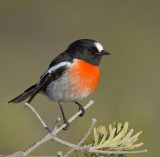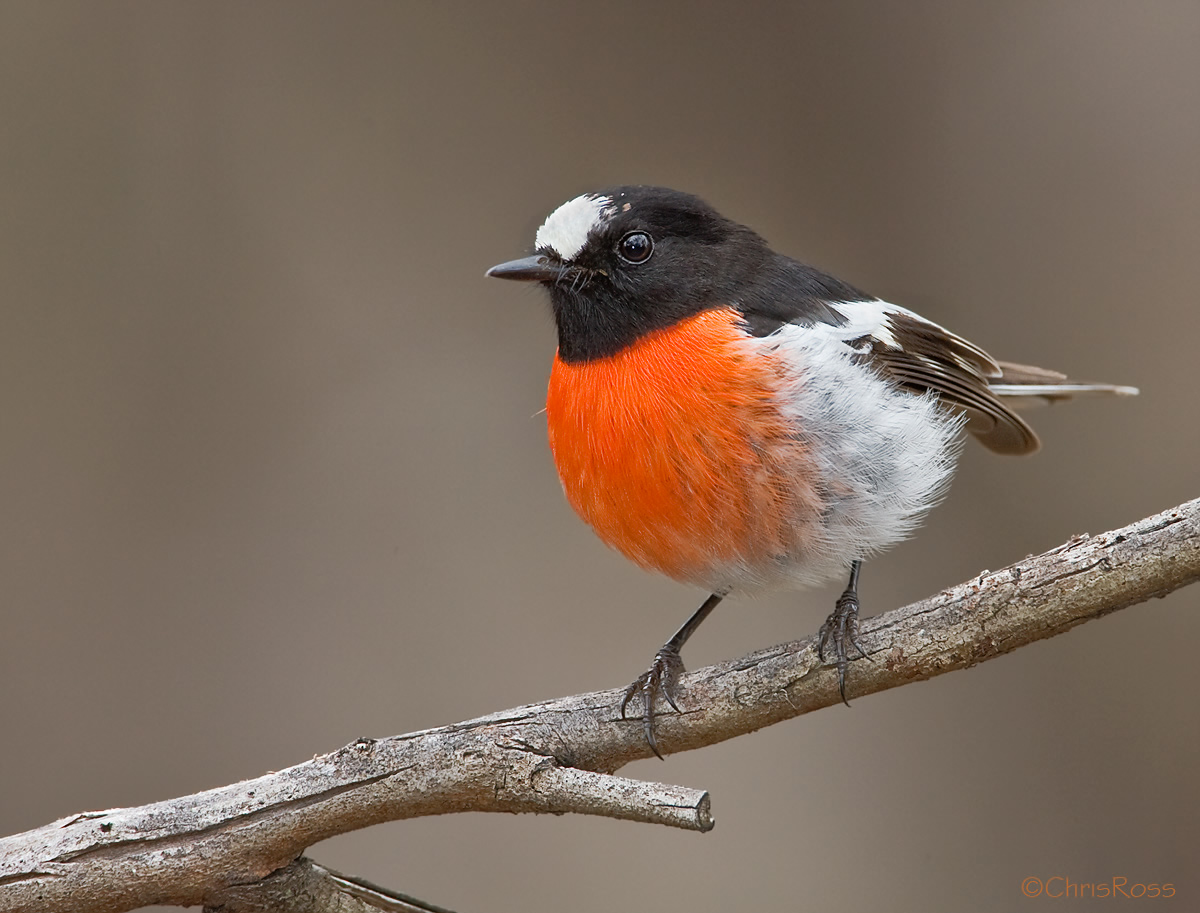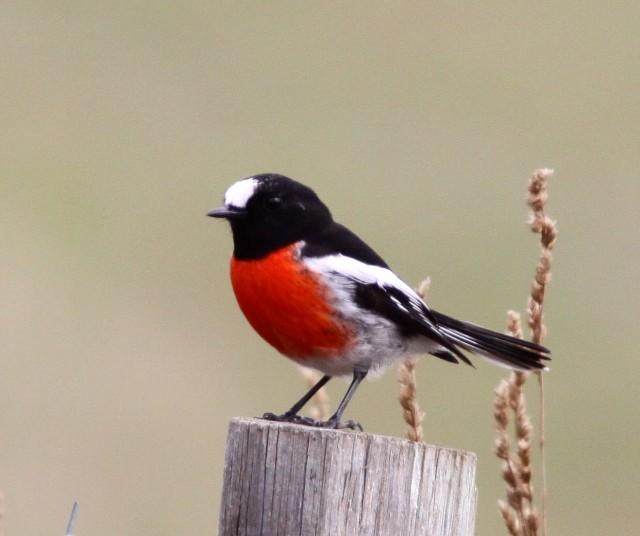
Petroica multicolor
SUBFAMILY
Petroicinae
TAXONOMY
Muscicapa multicolor Gmelin, 1789, Norfolk Island. Eighteen
subspecies.
OTHER COMMON NAMES
French: Miro йcarlate; German: Scharlachschnдpper; Spanish:
Tordo Australiano Carmнn.
PHYSICAL CHARACTERISTICS
5 in (13 cm); 0.4–0.5 oz (12–14 g). Some subspecies are smaller.
Black throat, bill, and upperparts; white forehead, wing coverts,
and under tail coverts.
DISTRIBUTION
Southwestern and southeastern Australia, including Tasmania,
Kangaroo Island, and Norfolk Island. Widespread in the Pacific,
including Fiji, Samoa, Vanuatu, Solomon Islands, and Bougainville.
HABITAT
Dry eucalypt forests and woodlands, with some understory.
Forests, edges, clearings, and gardens on Pacific islands.
BEHAVIOR
Perches in a conspicuous location, although usually quiet,
and may flick wings and raise and lower tail, perhaps when
agitated. Territorial in breeding season and wandering
more widely at other times. Song is pretty, trilling “weecheedalee-
dalee”; also makes ticking calls.
FEEDING ECOLOGY AND DIET
Mostly pounces onto ground from a low branch for insects and
spiders. Also sallies for flying insects in warm weather and
gleans from branches and occasionally foliage.
REPRODUCTIVE BIOLOGY
Breeding season from August to January, with repeated attempts.
Nest is made from bark and lichen and is placed in a
tree fork or sometimes a shallow cavity. Usually three eggs in a
clutch. Female is fed by male on nest, and both parents feed
young. Incubation and fledging periods last about 15 days.
Only 10% of nests succeeded in one New South Wales study.
CONSERVATION STATUS
Common in many areas but has declined in agricultural regions
due to habitat loss. Norfolk Island subspecies is classified
as Vulnerable.
SIGNIFICANCE TO HUMANS
A popular bird with bird watchers.
Photo Gallery of - Scarlet robin




 Animalia Life
Animalia Life